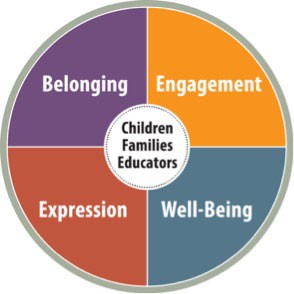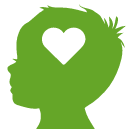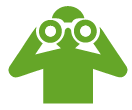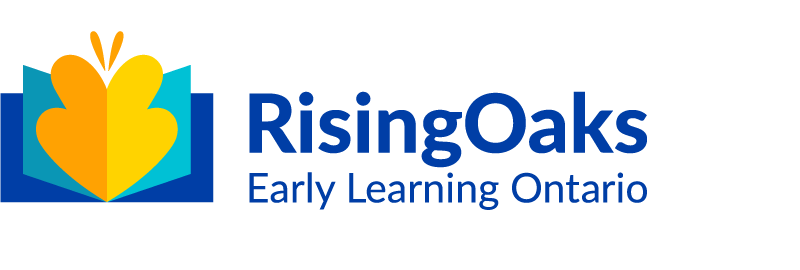Program Statements and Goals
The program offered by RisingOaks Early Learning is a reflection of research, theory and practice and is consistent with Ministry of Education policies, pedagogy and curriculum. As we continue to explore curriculum and advance our pedagogical leadership, we reference the following Ministry documents.
- How Does Learning Happen? Ontario’s Pedagogy for the Early Years
- Ontario Early Years Framework
- Think Feel Act: Lessons from Research about Young Children
- Early Learning for Every Child Today
Our educators use How Does Learning Happen? Ontario’s Pedagogy for the Early Years to guide their practice. How Does Learning Happen? is a professional learning resource guide — provided by the Ministry of Education. It is about learning through relationships for those working with young children and families. How Does Learning Happen? is intended to support pedagogy and curriculum/program development in RisingOaks’ program.
Pedagogy is “the understanding of how learning takes place and the philosophy and practice that support the understanding of learning”. Curriculum (the content of learning) and pedagogy (how learning happens) in early years settings are shaped by views about children, the role of educators and families, and relationships among them. How Does Learning Happen? helps RisingOaks' educators “focus on these interrelationships in the context of early years environments.”
Our View of the Child
Consistent with the Minister of Education’s policy, our educators view children at all ages to be capable, competent, curious and rich in potential.
- We believe that children are capable of informed risk-taking and increasing independence within appropriate environments.
- We know that children are competent and able to question, examine and investigate a wide variety of topics and areas of interest.
- We value children’s curiosity and sense of wonder and know that children learn valuable skills through play.
We believe that children come with lived experience and knowledge; that they are co-learners in our program. Our educators recognize and provide individualized support for each child as they grow and develop at their own pace — supporting each child to reach their full potential.
Program Foundation
 How Does Learning Happen? speaks to four foundations that are important for children to grow and develop in order to reach their full potential.
How Does Learning Happen? speaks to four foundations that are important for children to grow and develop in order to reach their full potential.
- Belonging refers to a sense of connectedness to others, an individual’s experiences of being valued, of forming relationships with others and making contributions as part of a group, a community, the natural world.
- Well-being addresses the importance of physical and mental health and wellness. It incorporates capacities such as self-care, sense of self, and self-regulation skills.
- Engagement suggests a state of being involved and focused. When children are able to explore the world around them with their natural curiosity and exuberance, they are fully engaged. Through this type of play and inquiry, they develop skills such as problem solving, creative thinking, and innovating, which are essential for learning and success in school and beyond.
- Expression or communication (to be heard, as well as to listen) may take many different forms. Through their bodies, words, and use of materials, children develop capacities for increasingly complex communication. Opportunities to explore materials support creativity, problem solving, and mathematical behaviours. Language-rich environments support growing communication skills, which are foundational for literacy.
The four foundations inform the goals for RisingOaks’ program
Pedagogical Approaches Explained
Our educators use recognized pedagogical approaches to support children’s learning and development in achieving our program goals. These approaches are explained below and apply across many of the goals listed in the next section:
Responsive relationships
- A responsive relationship is one that creates and builds a sense of trust, a healthy sense of self and encourages self-regulation. This relationship is developed between the child, their family and the Registered Early Childhood Educator.
Learning through exploration, play and inquiry
- Educators build upon the children’s interests by providing materials for exploration. Educators assist children in seeking answers to their questions.
- Hands-on play is the foundation of the learning and development.
Project Approach
- Is an inquiry-based learning approach where children initiate an interest in the specific topic. Educators support the learning through scaffolding, research, investigation (field study) and reflection
- Educators plan curriculum that engages children in a more thorough investigation of their topic of interest
Educators as co-learners
- Educators go beyond giving answers or asking questions they already know the answer to. They become a partner, a co-researcher — learning along with the children through inquiry and exploration.
Environment as third teacher
- The child’s environment is set-up with open-ended materials that can be manipulated, investigated and provide exploration through the five senses.
- The environment allows for child-initiated exploration and play
Pedagogical documentation
- A visible record of what the children and educators have been researching and investigating through curriculum.
- Allows for reflection, questioning and discussion on a specified topic of interest
- It is a reflection of developmental growth over a period of time.
Reflective practice and collaborative inquiry
- Intentional and thoughtful
- Closely observing and studying; uses a thinking lens
- Allows educators to make meaningful decisions about how to respond to children’s interests
Goals and Approaches
On the right, you will find our Program Statement Goals. Each expands to showcase our approach and strategies that educators use in implementing care, activities and curriculum to achieve stated goals. Essentially the approaches speak to what you might “see” in the program, as well as things we’ve put in place behind the scenes towards achieving each goal.

Health, Safety, Nutrition & Well-being of Children
1. To promote the health, safety and well-being of children, ensuring individual needs are met, within RisingOaks’ program
- Educators welcome families and children with a personal greeting; seeking information about the child’s health, mood, or special events in the child’s life – supporting the child and family in this transition.
- Educators track attendance noting the time each child arrived and again when each child is picked up.
- At the end of the day, educators make eye contact with parents who are picking up a child. If someone unfamiliar is picking up, educators ask that individual for photo ID and confirm that they are authorized to pick up the child.
- On a regular basis, at least once per week, educators seek out each parent to provide an update or story that reflects the child’s learning and activities.
- Educators can be seen engaged with children, taking an interest in them and their activities – thus creating a sense of belonging for each child.
- Educators discuss safety with the children – help the children to identify safety rules for various activities and support the children to make good choices.
- Field trips and field studies are an integral part of our program. Educators provide parents with a Field Trip Information Form outlining key details regarding such activities – including risks and safety management strategies. A permission form is required to confirm informed consent for each child participating. Volunteers are often sought to support staff in supervision.
- Children who are sick are closely monitored, with hand-washing encouraged regularly. If a child has a fever + one other symptom, an early pick up is requested. When an infectious illness is confirmed in the centre, a sign is posted to inform families and provide facts about that illness.
- When medication is brought into the centre, educators will ask you to complete some forms. Educators will check the information you provided against the instructions on the medication itself to ensure it matches and that your request is in line with RisingOaks’ policies.
2. To promote good nutrition and healthy eating habits for children
- Menus are posted at the centre and online for families. Any changes are noted on the posted copy at the centre. The menus include diversity in foods served (e.g., hummus, guacamole, black bean brownies, cabbage-roll casserole, etc.)
- RisingOaks employs a cook at each location. The cook prepares homemade snacks and lunches daily. Children in camp may assist in making their lunch on field trip days.
- Educators provide for a free flow snack in the morning and afternoon, encouraging children to come to the table when they are ready. An educator sits with the children but encourages them to be independent in serving themselves to try new foods. Educators act as a role model in this regard.
- Educators include gardening and learning about fruits and vegetables in their curriculum.
- Educators engage children in cooking and baking experiences as part of curriculum while exploring healthy eating and nutrition.
- Allergy lists are posted in the kitchen and the classroom and act as a reminder for staff.
- Our website provides additional resources on health eating.

Positive Relationships, Communication & Engagement
3. To foster engagement and the development of positive, responsive relationships between children, families and educators
- Parents are regularly invited into the program – to observe, to review documentation, to share their expertise or as a volunteer.
- Educators make an effort to get to know children and their families - respecting the parent’s role as the first teacher, as well as their beliefs and values.
- Educators are respectful when sharing incidents where a child required assistance to be successful in the program.
- Educators actively listen to children and respond in a positive way. They support the child’s need to self-regulate and assist them as they work to develop that skill.
- Educators teach children and refer back to the “Tools for Life” program. They –may wear a key tag of the various Tools to reference back to when supporting children in managing conflict with their peers.
- Educators provide support to parents – answering questions about child development, helping with potty training or providing resources. In doing so, educators are respectful of the parent’s goals for their children.
4. To actively engage with community partners to enhance RisingOaks’ program.
- Additional staff from outside resource agencies (e.g., KW Habilitation, KidsAbility) who are observing, providing 1:1 support to a child.
- College and high school students who are completing a placement in our classrooms.
- Parents may be asked to sign an Exchange of Information form that allows RisingOaks and school staff permission to speak about your child’s development and learning needs.
- Educators often invite special visitors into the program. For example: community helpers (police officer, fire fighter), dental hygienist, humane society, librarian, etc.
- Parents may receive a request for their child to participate in a research study conducted by the University or College on child cognition, literacy, or numeracy or other developmental areas.
- Together with their educators, children may identify possible experts in our community who can assist us to learn more about a topic or where we can do a field study. Educators also plan walks and field trips for the children to explore their community.
- Requests to support community campaigns (e.g., Angel Tree, Food Bank, etc.).

Sense of Self
5. To give children a voice for self-expression, exchange of ideas and positive communication among their peers and educators
- Educators support children in documenting their own learning when possible. To that end, you may see postings of the children’s survey results or stories or plays written – in their hand-writing. As children get older, they also help to document on the “white boards” outside our classrooms.
- Educators prompt the children to use the “Tools for Life” when exchanging ideas with peers – or even with educators. You might hear the children talk about “compromise”, or a need to “talk it out”.
- Educators are beginning to develop children’s portfolios – a collection of photos and documentation that demonstrates your child’s learning.
- Educators will ask you, and children over 6 years of age, to sign a Behaviour Code. This document outlines expectations of children, staff and families, behaviour that is considered inappropriate or harmful to developing positive relationships and how educators will respond.
- Children are invited to help plan for and lead their own learning. Through this inquiry-based learning, children are free to express ideas and explore their curiosity.
- Children are supported to develop leadership skills and invited to take on leadership roles within their program as they get older.
- Art activities are open ended to allow for maximum self-expression. There is no right or wrong way. Educators remain non-judgmental, asking questions to understand what the child is expressing or how they are perceiving the world around them.
- We respect culture, language, traditions and family values of all children in our program. To that end, children are introduced to different languages being spoken, see visual images of diverse people, places, activities and foods. Educators may ask children and families to share about their culture or special days.
6. To support the development of children's self-awareness, self-confidence, self-regulation and self-esteem
- Educators talk to children about feelings, right and wrong and other concepts towards developing self-regulation. They observe and provide prompts to help children be more self-aware – particularly when they are becoming upset. When emotions bubble over, educators listen to the child, allowing him or her to express themselves and – when appropriate – ask reflective questions.
- If needed, children may bring in “cuddlies” or a special blanket, etc that helps them feel safe and calm.
- Educators provide children with controlled choices – suited to their level of development.
- Educators acknowledge children’s efforts; preferring to focus on the positive.
- Educators may model appropriate conflict resolution skills when talking with children and co-workers.
- Educators communicate effectively with children – on their level, with eye contact, using prompts with a firm, but gentle tone to help the child calm down
- Children are encouraged to use the Relationship Centre or another quite space as a calming space.
- When upset, educators encourage children take a deep breath (in through the nose) to support self-regulation. In some cases, educators may collaborate with parents to experiment in identifying activities that act as a destressor for the child (e.g., walking, jumping, tight hug, shoulder rub, weighted blanket, etc.).
- Educators teach children to label their feelings and to identify self-calming activities that they can initiate themselves (e.g., music, playdough).
- To support the development of self-confidence and self-awareness, educators support children in safe risk-taking and show pride in their success.
7. To foster children's exploration, play and inquiry through a variety of child-initiated, educator-supported activities; including a mix of indoor, outdoor, active and quiet activities
- Our daily schedule is flexible with much time devoted to child-initiated, play-based learning. The schedule includes 2 hours of outdoor time (weather permitting). During inclement weather, indoor gross motor activities are offered.
- In our before and after school programs, children are outdoors for a minimum of 30 minutes; often extended based on children’s interest and weather.
- Outdoor time is not just for running games. Educators often take the curriculum outside with science experiments and more.
- Multiple play centres are visible in our classrooms for younger children — block area, sensory area, dramatic play, arts, science, book centre, relationship centre and more. These play centres are always available to the children.
- In our before and after school programs, educators set up interest tables and put out materials as a provocation to test children’s interest and see how they might use those materials.
- Educators are engaged with the children in activities, asking questions, hearing the children’s ideas – acting as a co-learner. Classroom technology supports research and further investigation.
- Use of loose parts (nuts, bolts, feathers, tubes, etc.), natural items from outdoors and furniture and equipment that can be found at home (e.g., children’s couch, pots and pans in dramatic play). You may also see a request posted to help us in sourcing specific materials or loose parts to supplement the children’s learning.
- Materials and loose parts are rotated to explore new interests and keep the children engaged.
- Younger children have a rest period daily. However, if a child is not tired, they are offered quiet activities to explore while others sleep. As children get older, rest time is reduced. In our school-age programs, educators build in time for quiet activities to ensure balance and to meet individual needs.
- Educators plan field trips to explore the community; but also field study to investigate a specific topic.
- Documentation curriculum and project work is visible in the classroom in the form of photos, question charts, surveys, 3D models, artwork and project history boards. Learning stories are included in our e-news and on Facebook or our website.

Exploration, Play & Inquiry
8. To create positive learning environments that support children in their learning and development based on their individual needs
- Upon enrolment, we ask families about their child’s developmental milestones, likes, dislikes, fears and more. We want to get to know the whole child and their family.
- Educators – in fact, the entire centre staff – take the time to get to know each child and family. In many cases, we become an extension of your family.
- The classroom environment includes quiet areas and a relationship centre where children can quietly explore a book or just take a break.
- RisingOaks’ educators often work with enhanced staff, resource consultants and SPOT therapists to ensure that all children are included and can work towards their full potential. Some children may use specialized equipment (e.g., visual schedule, technology).

Support for Staff
9. To enhance the quality of RisingOaks’ program by supporting each employee in professional development and through on-going coaching and mentoring
- RisingOaks celebrates employees who complete 20+ hours of professional development annually; this information is posted for parents.
- Each classroom has an iPad that educators use to research and investigate topics with the children. Staff also have access to a computer in the staff room for further investigation.
- At times, parents may see a pedagogical leader observing staff in program, providing coaching in the moment.
- At least annually, the Ministry program advisor visits each centre to license our program. Those visits involve observation and coaching with staff.
- Any concerns raised by parents are followed up promptly. Management follows up with the concerned parent to discuss action steps.
- Educators share new information and resources with their co-workers, and sometimes parents, after returning from a conference or workshop.
Organizational Support
RisingOaks’ management and administrative team supports educators in their Mission of providing play-based early learning to support each child to realize their potential while giving families peace of mind. We do this by
Program Evaluation
- RisingOaks participates in 3rd party program evaluations. Each program is evaluated every three years by an external auditor. In addition, supervisors and staff use environmental rating scales twice per year to evaluate their program.
- Members (i.e., parents) also participate in evaluating our programs through the annual member survey.
- With a focus on continuous improvement, each centre has an ongoing action plan that addresses any areas for improvement. RisingOaks also identifies organization-wide priorities.
Performance Monitoring
- Each employee receives an annual performance review. In addition, 2-3 developmental objectives are mutually agreed upon by the employee and their supervisor. The employee’s progress on those objectives are reviewed twice per year.
- This Program Statement will now help inform RisingOaks’ performance review process.
- When areas of concerns continue to be seen, RisingOaks may choose to issue a developmental focus where the supervisor provides short-term, intensive coaching to support an employee to raise the level of their practice.
- The Ministry of Education, through its annual licensing assessment, measures RisingOaks’ performance on a multitude of requirements outlined in the Child Care & Early Years Act.
- The executive director monitors compliance to RisingOaks policies. An audit is conducted annually with each policy being reviewed every three years.
Document & Review Impact
- In addition to the pedagogical documentation that is displayed in the classroom, RisingOaks is required to document and review the impact of our approaches towards meeting our goals. One way we do this is through our annual Member Survey.
- Parents are asked to evaluate RisingOaks on communication, learning activities, the skills their child learns are RisingOaks and much more. Survey results – including open-ended responses, give us an indication of impact.
- As we continue to refine this program statement additional methods for documenting and reviewing the impact will be defined.
Annual Review
- Per the Ministry’s direction, RisingOaks shall ensure that all new employees, students and volunteers review this Program Statement upon hire or before their placement begins. Additionally, all employees, students and volunteers will review this Program Statement annually, and after any modifications.
Implementation
The Program Statement Implementation policy sets out requirements and procedures to ensure that the approaches outlined in this Program Statement are implemented within our program and that the stated view of the child is observable in the program.
Responsibility for monitoring this policy rests with the centre supervisor and with the Executive Director monitoring compliance.









